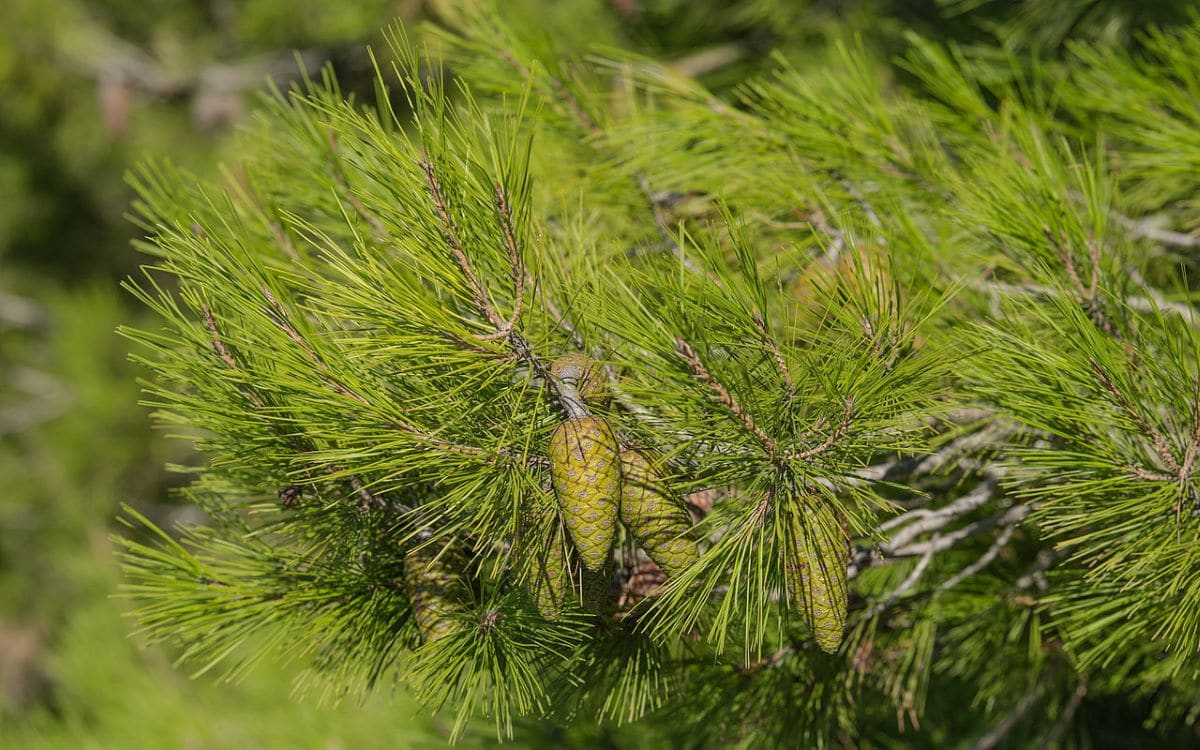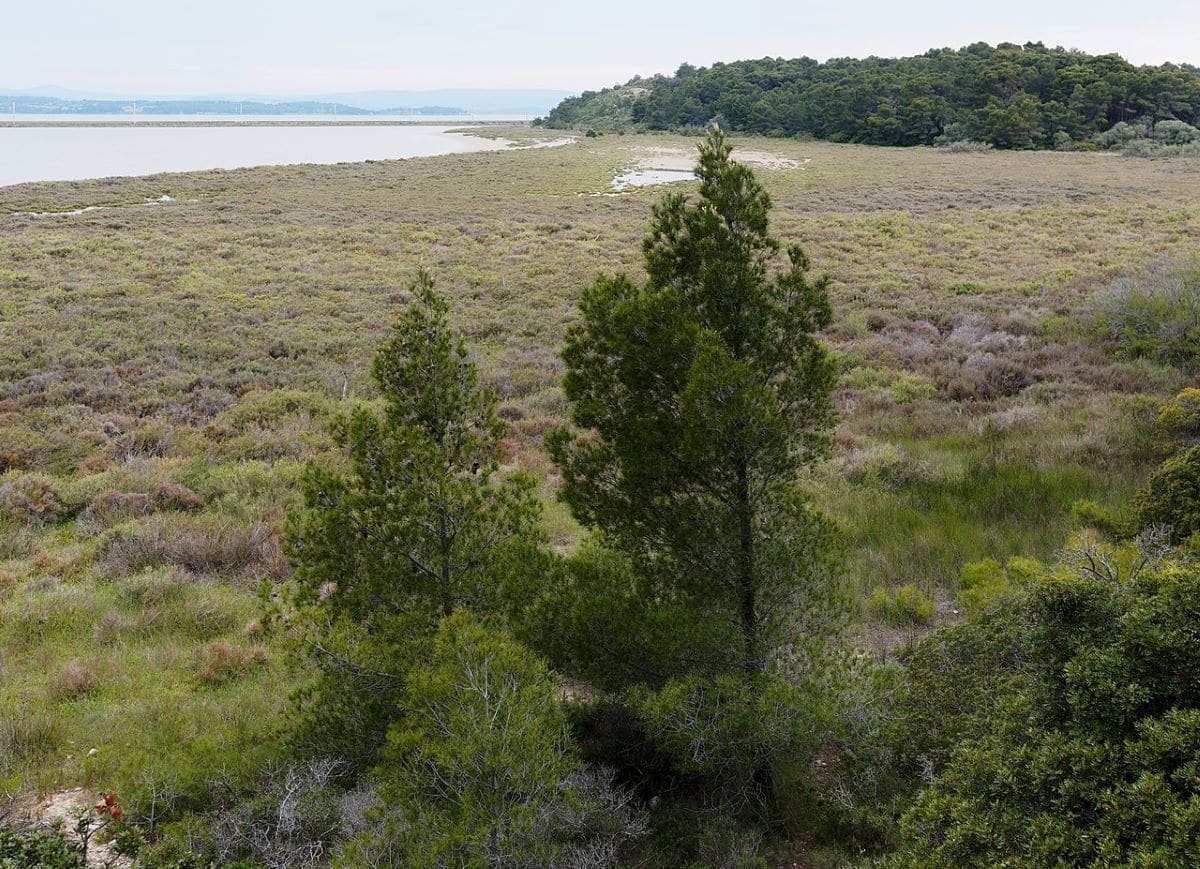
Image - Wikimedia / Christian Ferrer
El propagating through a pine forest (Pinus halepensis). It is a very fast-growing conifer that populates the Mediterranean coast, my place of origin. I have seen it forming forests, growing on cliffs, in open fields and as a garden tree, and I can say without hesitation that it is a very adaptable plant.
But always, always it has to be in an area where the sun's rays fall directly on it. You need it. Only then will it have the opportunity to grow fast and strong.
Features propagating through a pine forest (Pinus halepensis).

Image - Wikimedia / Christian Ferrer
El propagating through a pine forest (Pinus halepensis)., known as Aleppo pine or Aleppo pine, It is an evergreen conifer that can reach 25 meters in height.. Its trunk is straight during its youth, but as the years go by it tends to bend (and believe me when I tell you, it can bend quite a bit if survival depends on it, becoming crooked if necessary).
The crown at first is rounded and compact, and over time it becomes irregular. The leaves are linear, green and with a somewhat leathery texture which we call needles.. These remain for many months on the plant, but when they reach the end of their life they dry up and fall, leaving room for the new ones.
Its cones are small, about 5-12 centimeters long, and it produces them in large numbers in spring-summer, after flowering.
Where is the Aleppo pine found?
It is a tree that lives in the Mediterranean region. In other words, we can find it in Spain (the eastern half of the peninsula and the Balearic Islands), the southeast and east of France, Greece, Italy, South Asia, and it reaches North Africa.
It lives from sea level to 1600 meters above sea level., in sunny areas. It usually forms forests called pine forests, although it is also isolated.
How long does an Aleppo pine live?
About 150-180 years. It is a fairly long-lived species if we take into account that it usually inhabits arid regions, with temperatures that can easily exceed 35ºC and remain above 20ºC for several weeks in summer.
The Mediterranean winter is mild. Depending on the area, there may be frosts of up to -12ºC, but the lower the altitude, the lighter they will be. In fact, to give you an idea, where I live the temperatures only drop to -1,5ºC or -2ºC occasionally.
What are the uses for it?
El propagating through a pine forest (Pinus halepensis). is a plant that it has been used a lot for reforestation. Thanks to its long roots, it prevents soil erosion, a common problem in those areas where the degree of insolation is high and where it also rains little.
However also has uses as a decorative tree. In a garden it is often planted as an isolated specimen or in small groups. It is highly valued as an urban plant, even being used to provide shade for playgrounds. Also, those who know, work it as bonsai.
How do you take care of the propagating through a pine forest (Pinus halepensis).?
If you want to grow an Aleppo pine at home, you will have to take into account a series of things, since it is a tree that, if it is in the right place, will greatly beautify the area; but if this is not the case, problems may arise in the medium or long term.
Location
the aleppo pine it has to be in a sunny place. If you give it all day, the better, otherwise you should at least give it half a day. In addition, it must be far from pipes and pavements, at least ten meters.
But there is still more: when its needles fall to the ground, they acidify it; that is, they lower the pH, since theirs is very, very low, between 3.2 and 3.8. This can be a problem for plants that only grow in alkaline and/or neutral soil, such as carob, olive or almond trees. Therefore, it is not a good idea to put it near them.
Irrigation and fertilizer
It resists drought very well once it has been in the ground for at least a year. But in the meantime, and if it is going to be grown in a pot, it has to be watered about twice a week during the summer, and approximately every 15 days the rest of the year.
On the other hand, if we talk about the subscriber, we can apply a little guano or manure once a month, but it is not mandatory or vital for this conifer.
Earth

Image - Wikimedia / Christian Ferrer
Prefers limestone soils or soils, although it grows without problems in sandy soils. Supports soils rich in salts (marine).
If it is going to be grown in a pot, you can opt for generic substrates, which are used for various types of plants, such as universal (for sale here).
Plantation
El propagating through a pine forest (Pinus halepensis). plant in the garden or in a larger pot throughout the spring. Once the cold is behind you, you can proceed to it. Of course, it is important that it is removed from the pot only if it has rooted well, that is, only if its roots appear through the holes in the container.
And it is that otherwise it would suffer damage and might not pass the transplant.
Pests
His main enemy is pine processionary, but luckily it can be combated with ecological insecticides such as Bacillus thuringiensis (on sale here).
Other less important pests are Dendrolimus pini, which causes partial loss of leaves, or the Tomicus piniperda whose larvae excavate galleries in branches and trunk. But both are avoided by keeping the tree well cared for.
Management
Various fungi can infect you, such as Diplodia pinea which causes premature death of the leaves; or the Lophodermium pinastri which produces lumps or black bumps on the branches.
One way to avoid them is to grow the tree in well-drained soil, since fungi love moisture, and if the soil absorbs water quickly, the more difficult it will be for them to proliferate. If there are symptoms, it must be treated with fungicides.
Multiplication

Image – Wikimedia/Jean-Pierre Bazard Jpbazard
Multiply by seeds in spring or even it could in summer, since they need heat to germinate.
Rusticity
Supports up to -12ºC. Temperatures of up to 40ºC do not harm it either.
What did you think of the propagating through a pine forest (Pinus halepensis).?